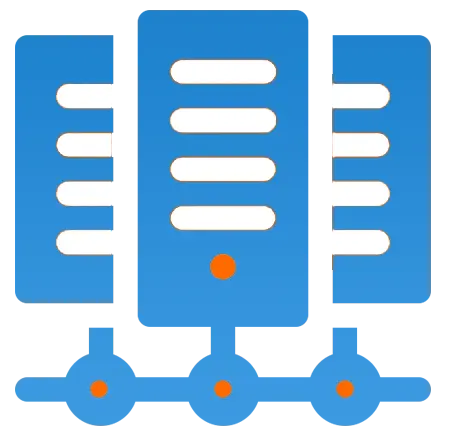Get 69% Off on Cloud Hosting : Claim Your Offer Now!
- Products
-
Compute
Compute
- Predefined TemplatesChoose from a library of predefined templates to deploy virtual machines!
- Custom TemplatesUse Cyfuture Cloud custom templates to create new VMs in a cloud computing environment
- Spot Machines/ Machines on Flex ModelAffordable compute instances suitable for batch jobs and fault-tolerant workloads.
- Shielded ComputingProtect enterprise workloads from threats like remote attacks, privilege escalation, and malicious insiders with Shielded Computing
- GPU CloudGet access to graphics processing units (GPUs) through a Cyfuture cloud infrastructure
- vAppsHost applications and services, or create a test or development environment with Cyfuture Cloud vApps, powered by VMware
- Serverless ComputingNo need to worry about provisioning or managing servers, switch to Serverless Computing with Cyfuture Cloud
- HPCHigh-Performance Computing
- BaremetalBare metal refers to a type of cloud computing service that provides access to dedicated physical servers, rather than virtualized servers.
-
Storage
Storage
- Standard StorageGet access to low-latency access to data and a high level of reliability with Cyfuture Cloud standard storage service
- Nearline StorageStore data at a lower cost without compromising on the level of availability with Nearline
- Coldline StorageStore infrequently used data at low cost with Cyfuture Cloud coldline storage
- Archival StorageStore data in a long-term, durable manner with Cyfuture Cloud archival storage service
-
Database
Database
- MS SQLStore and manage a wide range of applications with Cyfuture Cloud MS SQL
- MariaDBStore and manage data with the cloud with enhanced speed and reliability
- MongoDBNow, store and manage large amounts of data in the cloud with Cyfuture Cloud MongoDB
- Redis CacheStore and retrieve large amounts of data quickly with Cyfuture Cloud Redis Cache
-
Automation
Automation
-
Containers
Containers
- KubernetesNow deploy and manage your applications more efficiently and effectively with the Cyfuture Cloud Kubernetes service
- MicroservicesDesign a cloud application that is multilingual, easily scalable, easy to maintain and deploy, highly available, and minimizes failures using Cyfuture Cloud microservices
-
Operations
Operations
- Real-time Monitoring & Logging ServicesMonitor & track the performance of your applications with real-time monitoring & logging services offered by Cyfuture Cloud
- Infra-maintenance & OptimizationEnsure that your organization is functioning properly with Cyfuture Cloud
- Application Performance ServiceOptimize the performance of your applications over cloud with us
- Database Performance ServiceOptimize the performance of databases over the cloud with us
- Security Managed ServiceProtect your systems and data from security threats with us!
- Back-up As a ServiceStore and manage backups of data in the cloud with Cyfuture Cloud Backup as a Service
- Data Back-up & RestoreStore and manage backups of your data in the cloud with us
- Remote Back-upStore and manage backups in the cloud with remote backup service with Cyfuture Cloud
- Disaster RecoveryStore copies of your data and applications in the cloud and use them to recover in the event of a disaster with the disaster recovery service offered by us
-
Networking
Networking
- Load BalancerEnsure that applications deployed across cloud environments are available, secure, and responsive with an easy, modern approach to load balancing
- Virtual Data CenterNo need to build and maintain a physical data center. It’s time for the virtual data center
- Private LinkPrivate Link is a service offered by Cyfuture Cloud that enables businesses to securely connect their on-premises network to Cyfuture Cloud's network over a private network connection
- Private CircuitGain a high level of security and privacy with private circuits
- VPN GatewaySecurely connect your on-premises network to our network over the internet with VPN Gateway
- CDNGet high availability and performance by distributing the service spatially relative to end users with CDN
-
Media
-
Analytics
Analytics
-
Security
Security
-
Network Firewall
- DNATTranslate destination IP address when connecting from public IP address to a private IP address with DNAT
- SNATWith SNAT, allow traffic from a private network to go to the internet
- WAFProtect your applications from any malicious activity with Cyfuture Cloud WAF service
- DDoSSave your organization from DoSS attacks with Cyfuture Cloud
- IPS/ IDSMonitor and prevent your cloud-based network & infrastructure with IPS/ IDS service by Cyfuture Cloud
- Anti-Virus & Anti-MalwareProtect your cloud-based network & infrastructure with antivirus and antimalware services by Cyfuture Cloud
- Threat EmulationTest the effectiveness of cloud security system with Cyfuture Cloud threat emulation service
- SIEM & SOARMonitor and respond to security threats with SIEM & SOAR services offered by Cyfuture Cloud
- Multi-Factor AuthenticationNow provide an additional layer of security to prevent unauthorized users from accessing your cloud account, even when the password has been stolen!
- SSLSecure data transmission over web browsers with SSL service offered by Cyfuture Cloud
- Threat Detection/ Zero DayThreat detection and zero-day protection are security features that are offered by Cyfuture Cloud as a part of its security offerings
- Vulnerability AssesmentIdentify and analyze vulnerabilities and weaknesses with the Vulnerability Assessment service offered by Cyfuture Cloud
- Penetration TestingIdentify and analyze vulnerabilities and weaknesses with the Penetration Testing service offered by Cyfuture Cloud
- Cloud Key ManagementSecure storage, management, and use of cryptographic keys within a cloud environment with Cloud Key Management
- Cloud Security Posture Management serviceWith Cyfuture Cloud, you get continuous cloud security improvements and adaptations to reduce the chances of successful attacks
- Managed HSMProtect sensitive data and meet regulatory requirements for secure data storage and processing.
- Zero TrustEnsure complete security of network connections and devices over the cloud with Zero Trust Service
- IdentityManage and control access to their network resources and applications for your business with Identity service by Cyfuture Cloud
-
-
Compute
- Solutions
-
Solutions
Solutions
-
 Cloud
Hosting
Cloud
Hosting
-
 VPS
Hosting
VPS
Hosting
-
GPU Cloud
-
 Dedicated
Server
Dedicated
Server
-
 Server
Colocation
Server
Colocation
-
 Backup as a Service
Backup as a Service
-
 CDN
Network
CDN
Network
-
 Window
Cloud Hosting
Window
Cloud Hosting
-
 Linux
Cloud Hosting
Linux
Cloud Hosting
-
Managed Cloud Service
-
Storage as a Service
-
 VMware
Public Cloud
VMware
Public Cloud
-
 Multi-Cloud
Hosting
Multi-Cloud
Hosting
-
 Cloud
Server Hosting
Cloud
Server Hosting
-
 Bare
Metal Server
Bare
Metal Server
-
 Virtual
Machine
Virtual
Machine
-
 Magento
Hosting
Magento
Hosting
-
Remote Backup
-
 DevOps
DevOps
-
 Kubernetes
Kubernetes
-
 Cloud
Storage
Cloud
Storage
-
NVMe Hosting
-
 DR
as s Service
DR
as s Service
-
-
Solutions
- Marketplace
- Pricing
- Resources
- Resources
-
By Product
Use Cases
-
By Industry
- Company
-
Company
Company
-
Company
NVMe Hosting – What NVMe offers in Terms of Benefits, Use Cases?
Table of Contents
At the start of 2017, data centres have started migrating towards the traditional SATA and SAS SSDs with NVMe SSDs. However, for a few reasons. The current famous deployments of NVMe VM-hypervisor-based stages, for example, VMware ESXi has numerous queues alongside the I/O stack. Subsequently, execution is bottlenecked by synchronisation that secures these lines, cross-VM impedance incites I/O inactivity. Above all, the up-to-64K-line capacity of NVMe SSDs can not be completely used.
In this blog, we discussed the hybrid framework of NVMe-based capacity framework called “H-NVMe” also known as NVMe hosting. It gives two VM I/O stack sending modes “Equal Queue Mode” and”Direct Access Mode”. The first mode expands parallelism and allows without lock activities by carrying out nearby lightweight lines in the NVMe driver. The subsequent mode further entire the whole I/O stack in the hypervisor\ layer and permits confided in client applications whose facilitating VMDK (Virtual Machine Disk)files are connected with our tweaked vSphere IOFilters to straightforwardly get to NVMe SSDs to further develop the exhibition disengagement.
This suits premium clients who have higher needs and the authorization to append I/OFilter to their VMDKs. H-NVMe is executed on VMware ESXi 6.0.0, and our assessment results show that the proposed H-NVMe structure can significantly improve throughputs and transmission capacities contrasted with the first inbox NVMe arrangement. List Terms-NVMe Driver, without lock I/O Queue, User displaying, Datacenter Storage, Resource Management, Tiering and reserving Algorithm, Big Data, Cloud Computing, Virtualization.
How did NVMe SSD business hosting come into presence?
NVMe SSD hosting capacity contains incredible speed and reaction that makes it as proficient as RAM. So far, when it was tied in with associating a PC, Cloud computing with a capacity gadget, SATA has been one all the time of the most acknowledged innovations. Since its appearance in the market in 2000, SATA (The Serial AT Attachment) has encountered an inviting reaction from the market. All things considered, it was a significant improvement over the common assortment of advances of a comparative kind.
SATA has a smooth and trustworthy correspondence design that is adequately proficient to match the speed of turning hard plates. Pretty much when SATA was getting coordinated with the interaction,
It was then that the specialists understood that sequential SATA connection points can be a weakness for quicker working SSDs. Other than the prevalence of the cutting edge SATA, some kept involving the SATA innovation for original drives. Notwithstanding, with the steady advancement of innovation, rumoured capacity merchants started to make extraordinary answers for procuring better execution from the SSD.
NVMe SSD Business Hosting
Few vendors picked Peripheral Component Interconnect Express (PCIe) – a sequential development transport for their remarkable arrangements. Functional deferrals remain related to capacity gadget association and correspondence processes. In any case, PCIe upheld an equal cycle, which thus made getting to information a consistent interaction. Independent of the viability of these arrangements, these regularly needed consistency.
Subsequently, the merchants found it difficult to utilise those arrangements similarly actually for all gadgets. Thus, they needed to plan extraordinary wheels for every gadget. This dealt with the issues independently however made the whole cycle a little muddled as far as application and manageability.
This is when NVMe stepped in as a saviour in need. It furnished uniform arrangements that managed the speed and proclivity of the blaze media at the same time. Headed by Intel, the NVMe Express Working gathering appeared comprising 90 organisations. In 2011, this gathering delivered form 1 of NVMe. This later gained popularity in the hosting industry. Now it is called NVMe hosting.
This one ended up being far more effective and overhauled than the other stockpiling principles related to SSDs. One of the highlights that particularly denoted the prevalence of NVMe was its inherent microcontroller. This part empowers the NVMe to organise with the CPU over the PCIe transport. Subsequently, the client encounters quicker and smoother tasks.
Difference Between SSDs & NVMe SSDs?
NVMe drives directly connect with the CPU through PCI-express lines rather than SATA transport, and they can convey substantial performance. Examine the following SSD/NVMe circle execution examination directed by OVH on 480 GB SSD SATA plate and 480GB NVMe drive.
|
480GB SSD SATA |
480GB NVMe SSD |
|
|
Sequential Read (128KB) |
Up to 500 MB/s |
Up to 1000 MB/s |
|
Sequential Write (128KB) |
Up to 440 MB/s |
Up to 500 MB/s |
|
Random IOPS Read (4KB) |
Up to 68,000 IOPS |
Up to 240,000 IOPS |
|
Random IOPS Write (4KB) |
Up to 15,100 IOPS |
Up to 16,000 IOPS |
NVMe Hosting Use Cases
NVMe capacity now use in business situations where each microsecond counts:
- Continuous client corporations, for example, finance, web-based business, and programming marketing agents.
- Analytics Applications, Big Data, Machine Learning (ML), and Artificial Intelligence (AI)
- DevOps, empowering you to run more emphasis quicker than expected.
NVMe Over Fabrics (NVMe-oF)
- This storage is more than quicker flash storage – it’s additionally a start to finish standard that empowers immeasurably more proficient vehicles of information between capacity frameworks and servers.
- NVMe expands NVMe’s presentation and idleness benefits across network textures like Ethernet, Fibre Channel, and InfiniBand.
- Gives higher IOPS and decreased inactivity from the host programming stack the entire way through the Data Fabric to the capacity cluster.
Benefits of NVMe for Hosting
It’s all about technology & time – NVMe storage is huge news in the enterprise server data centre since it saves time.
Firstly, unlike protocols designed in the times of mechanical hard plate drives, NVMe uses strong state stockpiling, In addition to the present multicore CPUs and gigabytes of memory.
Secondly, NVMe capacity takes the benefit of streamlined command sets to effectively parse and control information.
Conclusion
In conclusion, the critical accelerated accessibility with the utilisation of NVMe hosting is a distinct advantage!
Specifically, value-based assistance like a data set or online store site can be engaged with a quicker NVMe interface. If you have the help that gets numerous synchronous associations, it is advantageous to consider the huge parallelism given by NVMe. At last, this is because the NVMe stockpiling gives a more noteworthy exhibition thickness or IO gigabyte when compared with the global storage.
Each choice for sure has its compromises and one of the significant compromises here is the expense. The NVMe storage is now less expensive per megabyte than object storage. Moreover, one functional choice is to utilise the NVMe storage to file and for different tasks that require less access.
Recent Post

Stay Ahead of the Curve.
Join the Cloud Movement, today!
© Cyfuture, All rights reserved.
Send this to a friend

 Pricing
Calculator
Pricing
Calculator
 Power
Power
 Utilities
Utilities VMware
Private Cloud
VMware
Private Cloud VMware
on AWS
VMware
on AWS VMware
on Azure
VMware
on Azure Service
Level Agreement
Service
Level Agreement 


















